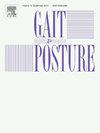Anterior distal femoral hemiepiphysiodesis for knee flexion contracture in paediatric patients with neuromuscular disorders: A systematic review and meta- analysis
IF 2.2
3区 医学
Q3 NEUROSCIENCES
引用次数: 0
Abstract
Background
This meta-analysis assesses the effectiveness of ADFH in the operative management of knee flexion contracture in children with neuromuscular disorders.
Methods
The study included 218 patients and assessed 340 knees. Patients had a median age of 11 years (age range 4–17 years) at initial evaluation. The mean follow up time was 25 months.
Results
Gait deviation index improved by 8.49 points following ADFH (95 % CI 4.82–12.15, p < 0.01). Minimum flexion angle saw an overall improvement of 20.61 degrees (95 % CI 15.8 – 26.04, p < 0.001). Knee flexion contracture had an overall improvement of 11.74 degrees across (95 % CI 10.14–13.33, p < 0.001). Popliteal angle improved by 15.59 degrees overall following ADFH (95 % CI 7.57–23.60), p < 0.01).
Conclusion
Orthopaedic operations are known to improve knee kinematics and clinical examination findings in neuromuscular disorder patients. ADFH is effective in improving passive and dynamic sagittal knee function.
求助全文
约1分钟内获得全文
求助全文
来源期刊

Gait & posture
医学-神经科学
CiteScore
4.70
自引率
12.50%
发文量
616
审稿时长
6 months
期刊介绍:
Gait & Posture is a vehicle for the publication of up-to-date basic and clinical research on all aspects of locomotion and balance.
The topics covered include: Techniques for the measurement of gait and posture, and the standardization of results presentation; Studies of normal and pathological gait; Treatment of gait and postural abnormalities; Biomechanical and theoretical approaches to gait and posture; Mathematical models of joint and muscle mechanics; Neurological and musculoskeletal function in gait and posture; The evolution of upright posture and bipedal locomotion; Adaptations of carrying loads, walking on uneven surfaces, climbing stairs etc; spinal biomechanics only if they are directly related to gait and/or posture and are of general interest to our readers; The effect of aging and development on gait and posture; Psychological and cultural aspects of gait; Patient education.
 求助内容:
求助内容: 应助结果提醒方式:
应助结果提醒方式:


